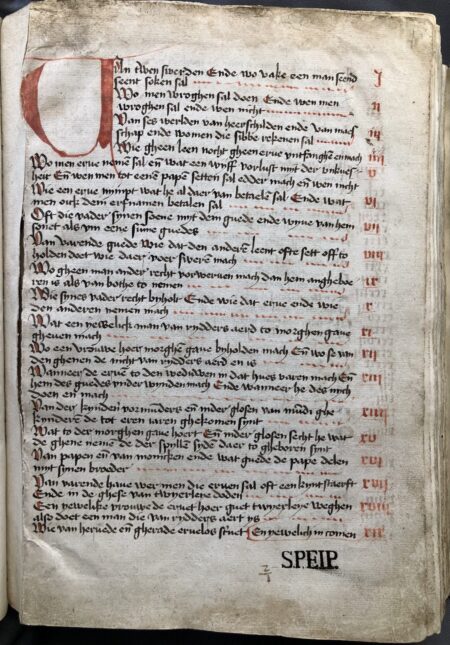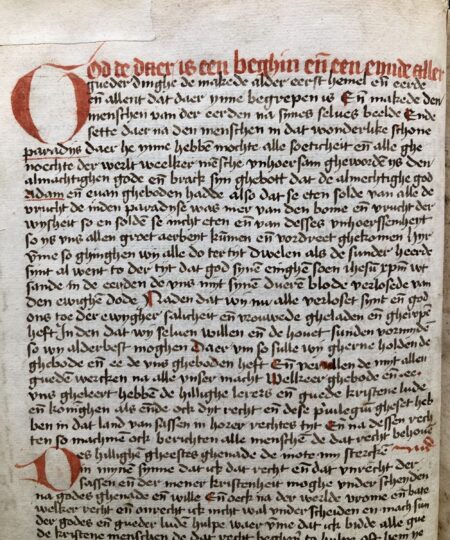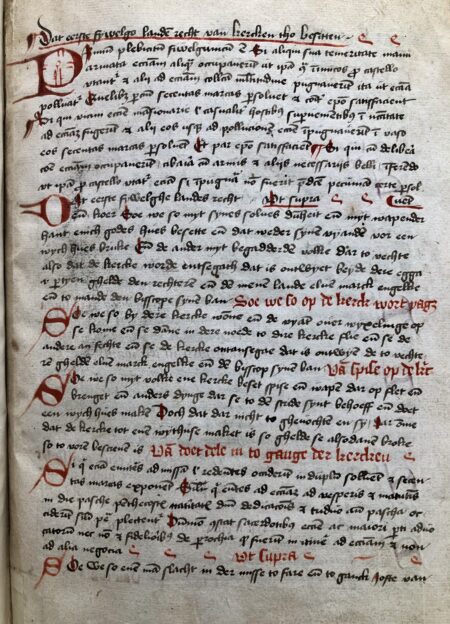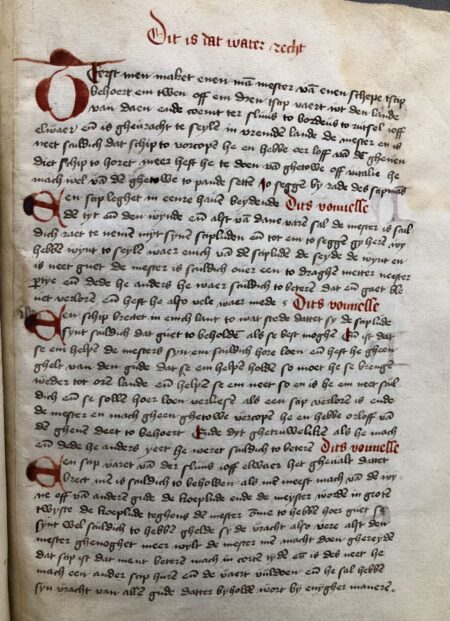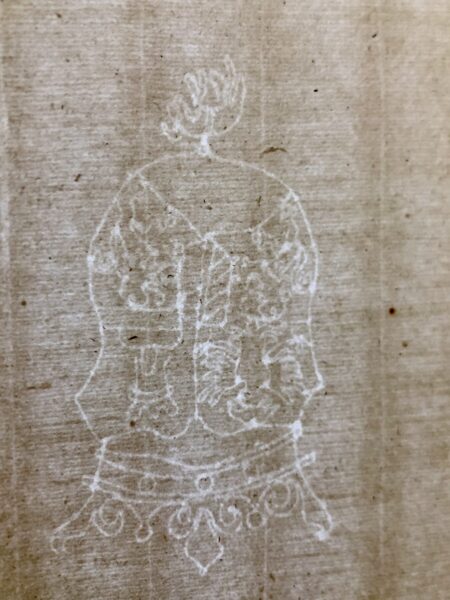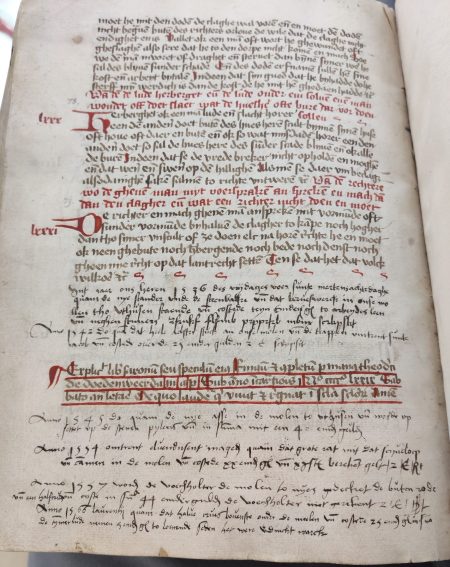This Molenwierdstraat is the location of the flour and hulling mill De Liefde (The Love). The current mill was built to replace the mill that was located here in Uithuizen until 1866, but there has been a mill in this village for much longer, at least as far back as the fifteenth century. The Elema family, who lived on the Elemaheerd in Uithuizen, owned a mill for several generations, at least until 1626. In the sixteenth century, Reneko or Rinke Elema (1510-1583) was the owner for years. Between 1536 and 1566, he added six remarkable notes to this book, referring to the maintenance of his mill. This is remarkable because this book only contains legal texts. For every major repair, Rinke noted the costs, the material needed, and when the repairs were done. He writes, for example, that he bought a new axle for the mill in 1545, which cost 40 guilders. This way, he created a kind of mini chronicle of his mill.

What kind of book did Rinke add his notes to? And why did he add them to this book? All the texts in this book are handwritten. Rinke’s notes about the mill are currently about halfway in the book, on a page that is half empty. Here he wrote six notes over a period of thirty years. The page of his choice is not as strange as it might seem now, for this was the final page of the book when it was in Rinke Elema’s possession. At the time, it contained only the text of the Sachsenspiegel (in medieval Dutch), which ends on this very page. Nowadays, other texts follow, but these were added later and then the book was rebound. For ages, this was quite a common practice. We do not know who added the texts, nor when. It was probably done in the seventeenth century, because the book’s current parchment binding dates to that century.
So Rinke Elema owned a copy of the Sachsenspiegel. This is the oldest and most important book on common law and feudal law from medieval Germany. For many centuries, during the Middle Ages and well into the early-modern period, it greatly influenced laws and rulings not only in Saxony, but also in northern and western Germany and the northeastern Netherlands. It is, therefore, not very surprising to find a nobleman like Rinke Elema in possession of a copy of it. The texts that were added later also concern the law, but they all (except one) explicitly deal with laws, administration, and jurisdiction in the Ommelanden (the lands surrounding the city of Groningen), covering subjects such as laws of succession and water rights in Fivelingo, Hunsingo, Langewold, and Vredewold.
The text of the Sachsenspiegel was copied by one Theodericus van Doedenweerda. This is made clear in a handwritten note: Finitum et completum per manus Theoderici de Doedenweerda (‘Completed and finished by the hands of Theodericus of Doedenweerda’). The copyist adds that he completed this work on Saturday, 20 March 1479. That is all we know about this man.

In the middle of the sixteenth century, then, a thinner version of this book was owned by Rinke Elema. More than two centuries later, the book had its current size and was owned by the Society Pro Excolendo Iure Patrio. This society was established in 1761 by a group of Groningen citizens with the aim of ‘thoroughly practising national law’. The society organized lectures and brought together an extensive collection of books with texts on national law (as opposed to Roman law). This is how the society accumulated an extensive library on the subject of the history of law, containing about 3,500 handwritten or printed legal and historical books. This collection, including this manuscript, has been on permanent loan to the University of Groningen Library since 1853.
Authors: Madelief Albers and Adrie van der Laan


